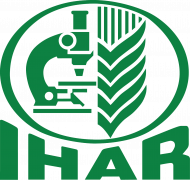Abstract
Early blight, caused principally by Alternaria solani, is one of the most important foliar diseases of potato. Candidate genes possibly involved in resistance were selected based on toxin resistance (Asc1 and metallothionein), pathogen recognition and response (ACRE-like, Pr5 and RBOH) and reduced cell death (BAX I). Gene expression levels of two resistant breeding line diploids, BD-1235 and BD-1265, along with a resistant wild potato, Solanum raphanifolium, were compared to two susceptible diploids, BD-1214 and BD-1217, at 18 h after inoculation with Alternaria solani. The largest change in gene expression occurred with the ACRE-like gene, a chitin responsive ubiquitin ligase, where all lines showed increases. The Asc1 gene was found to encode the toxin-resistant form in both susceptible and resistant lines. Expression levels increased in two resistant lines and one susceptible line but the gene was not expressed in S. raphanifolium. Both Pr5 and RBOH expression levels were low in all lines. Expression of two genes (metallothionein and BAX I) diverged, being downregulated in BD-1235 and upregulated in BD-1265 and S. raphanifolium, suggesting differences in resistance response between resistant lines. Functional gene analysis of transgenic Bintje potato plants with constitutive overexpression of metallothionein or BAX I revealed no significant change in disease observed in detached leaflets of metallothionein transgenics, while BAX I transgenics showed a reduction in lesion size and halo formation. Differences in resistance between the two sets of transgenic plants support the need to pair gene expression with functional analysis to properly determine resistance mechanisms.















